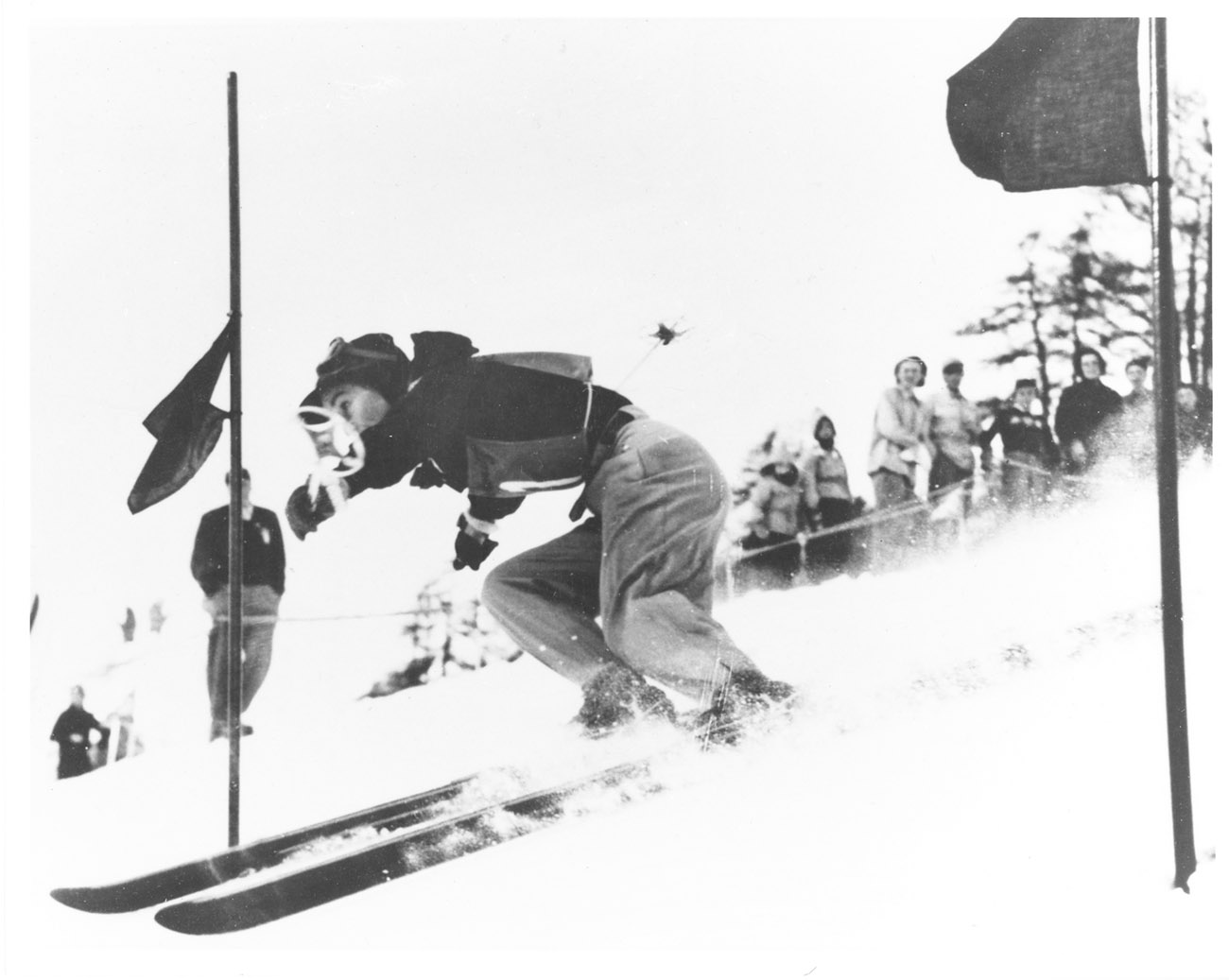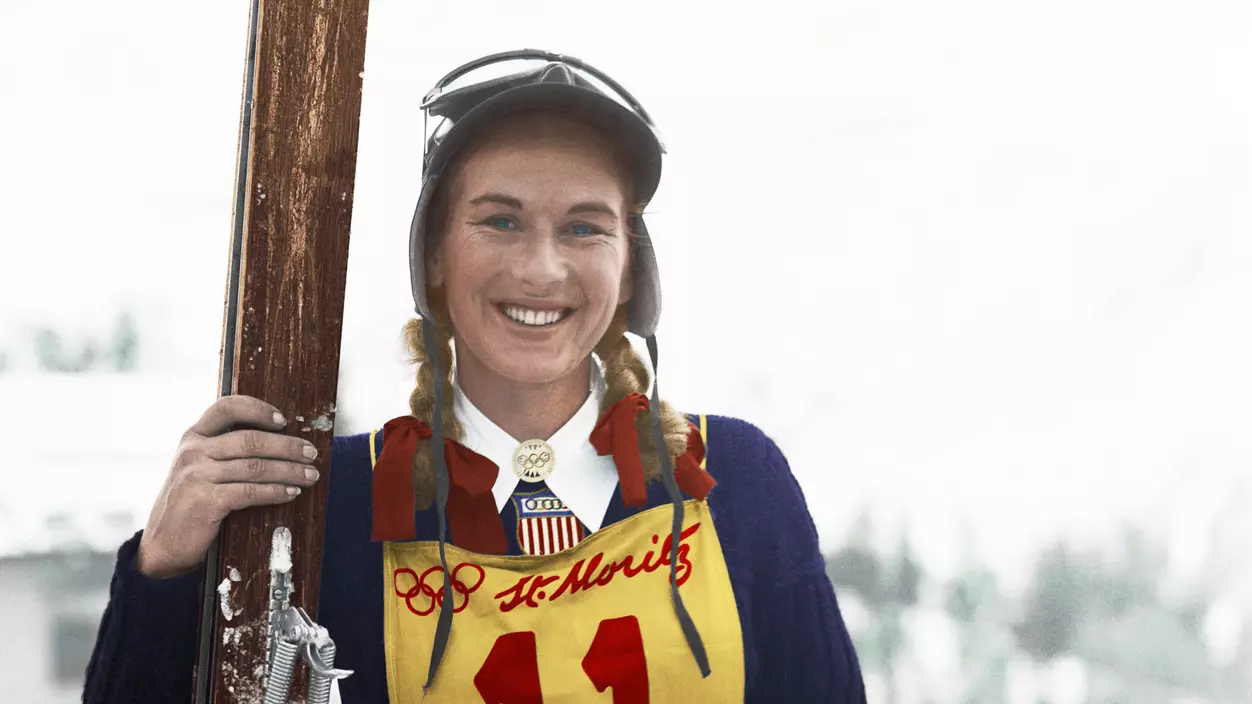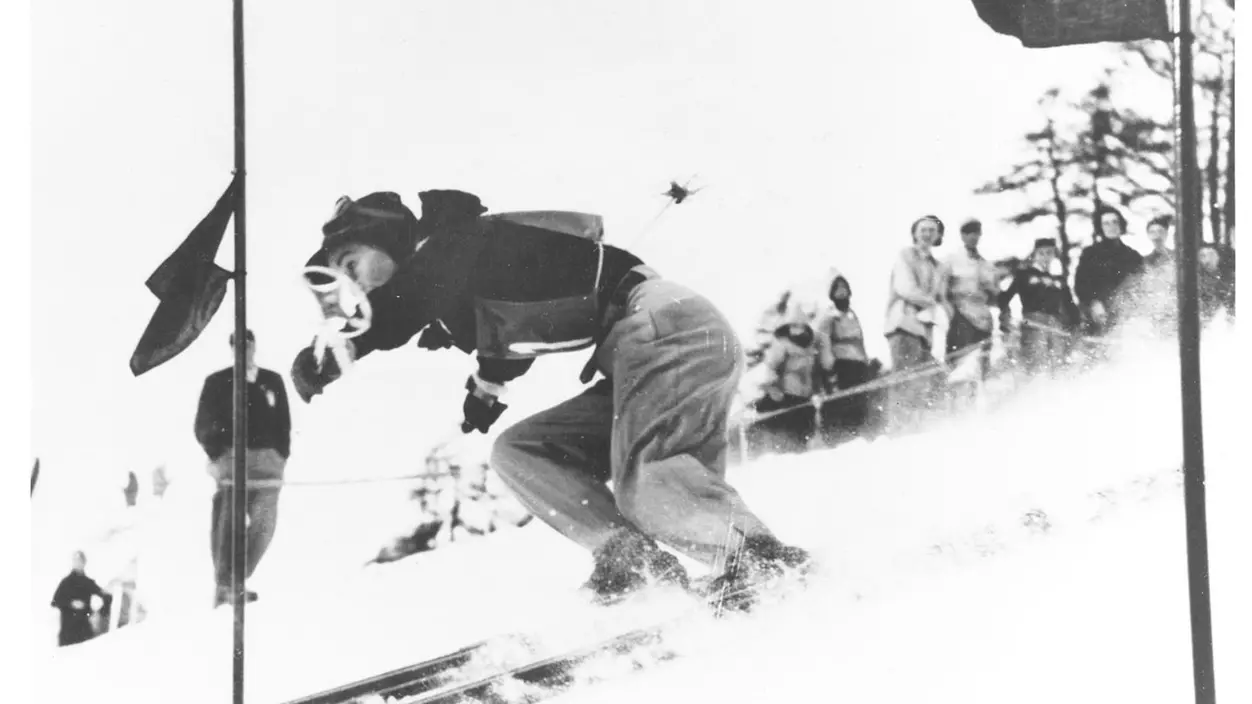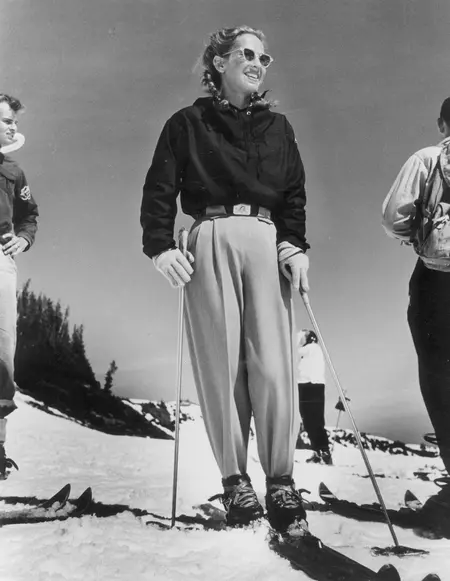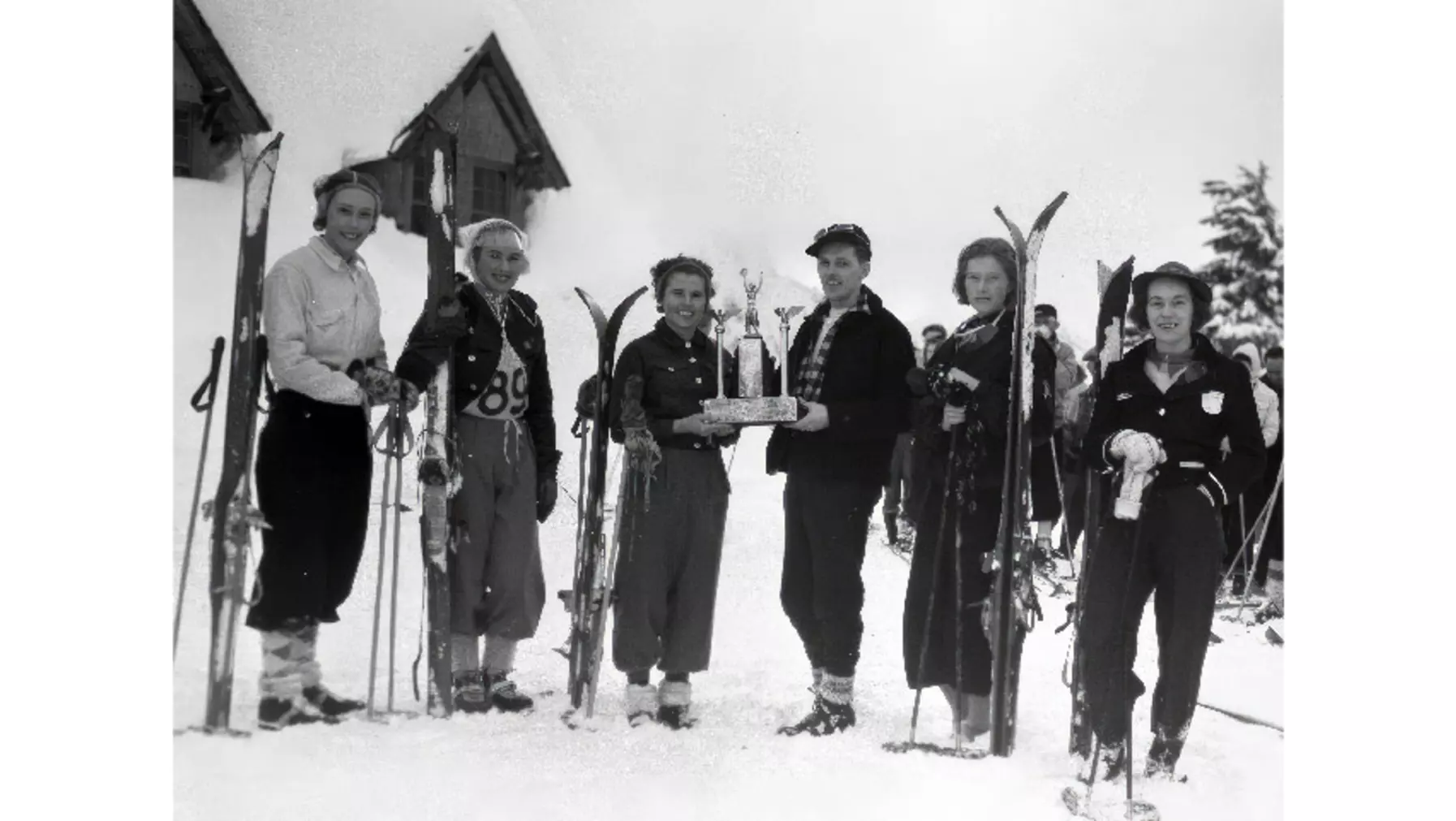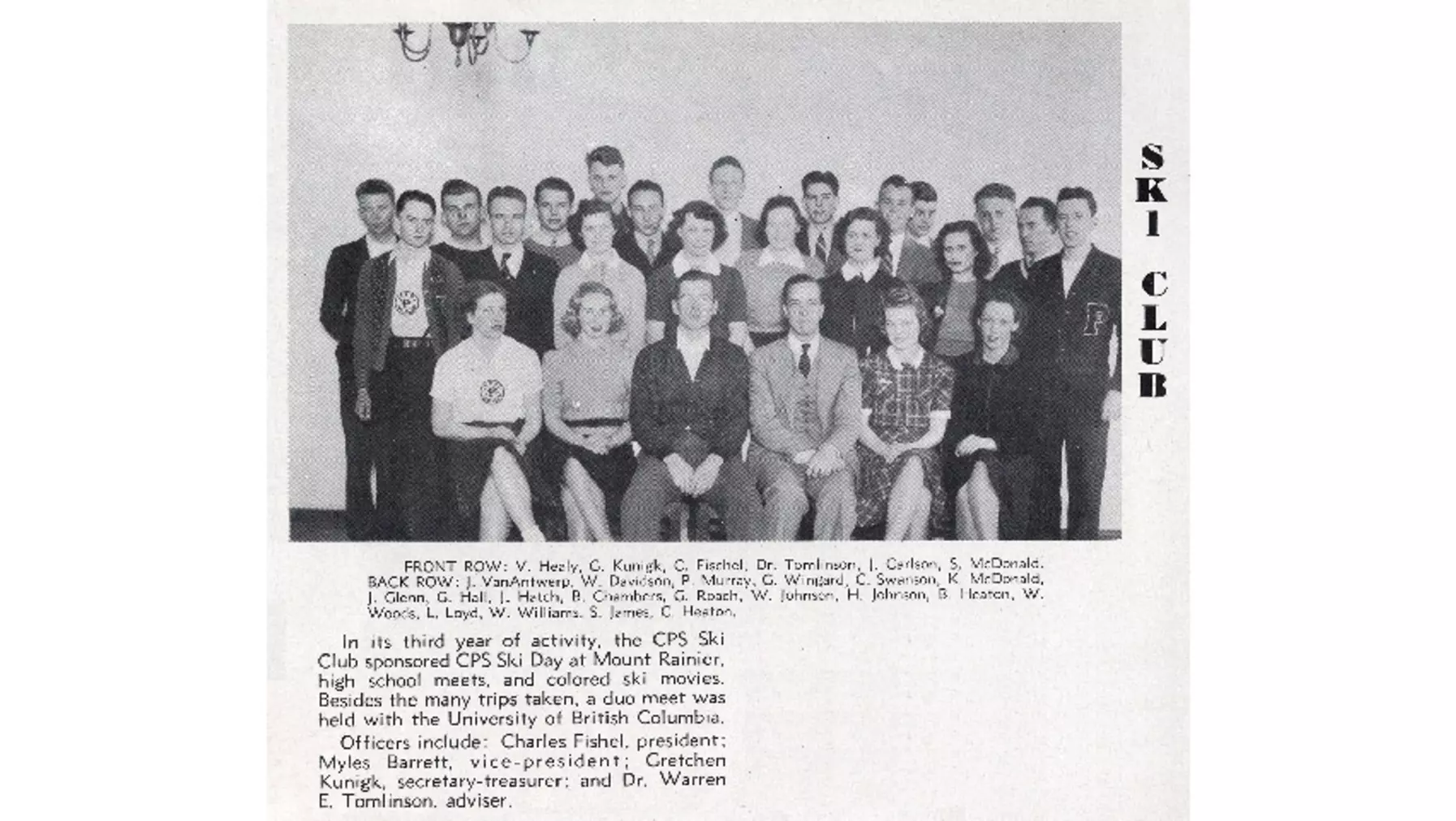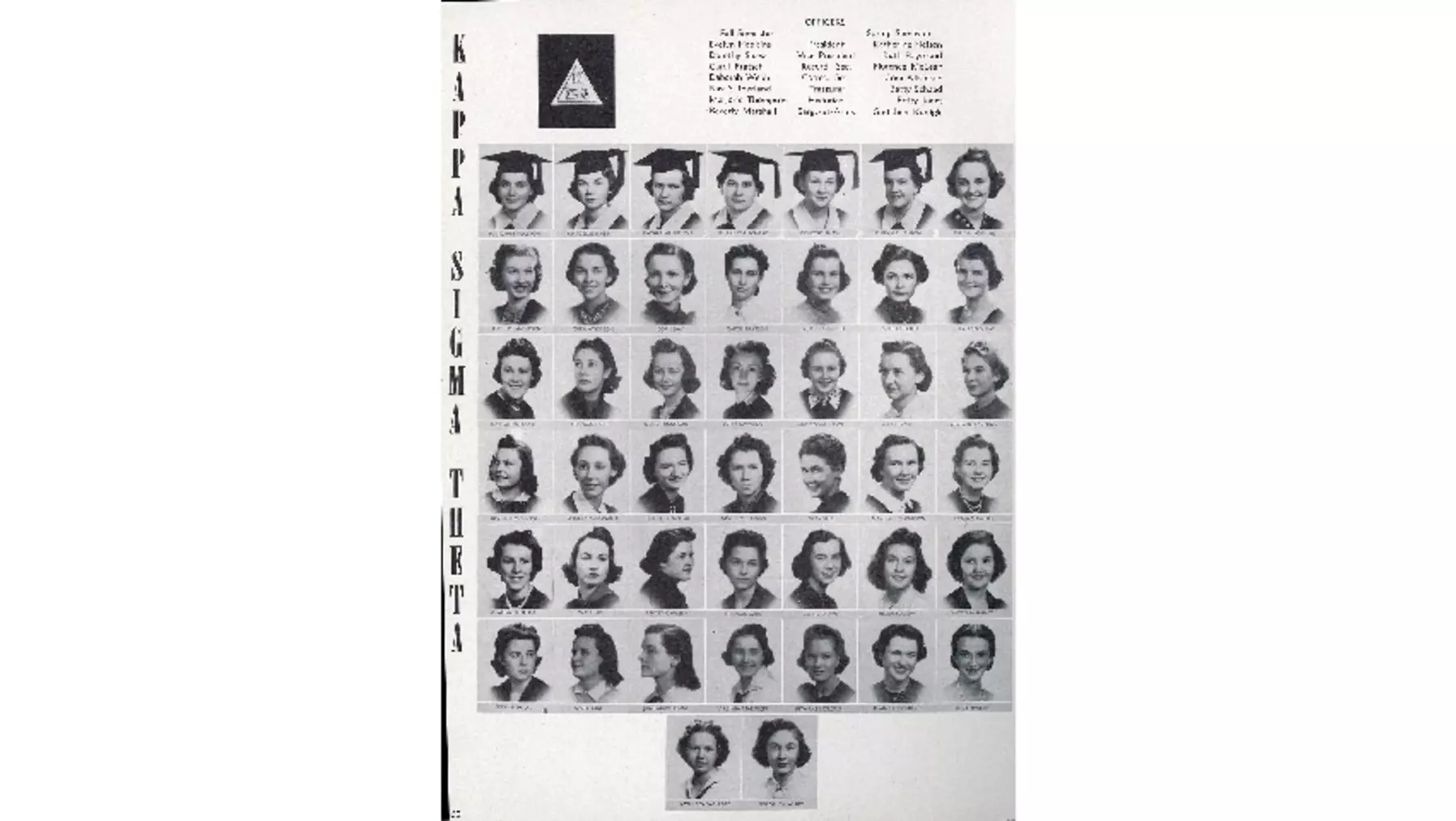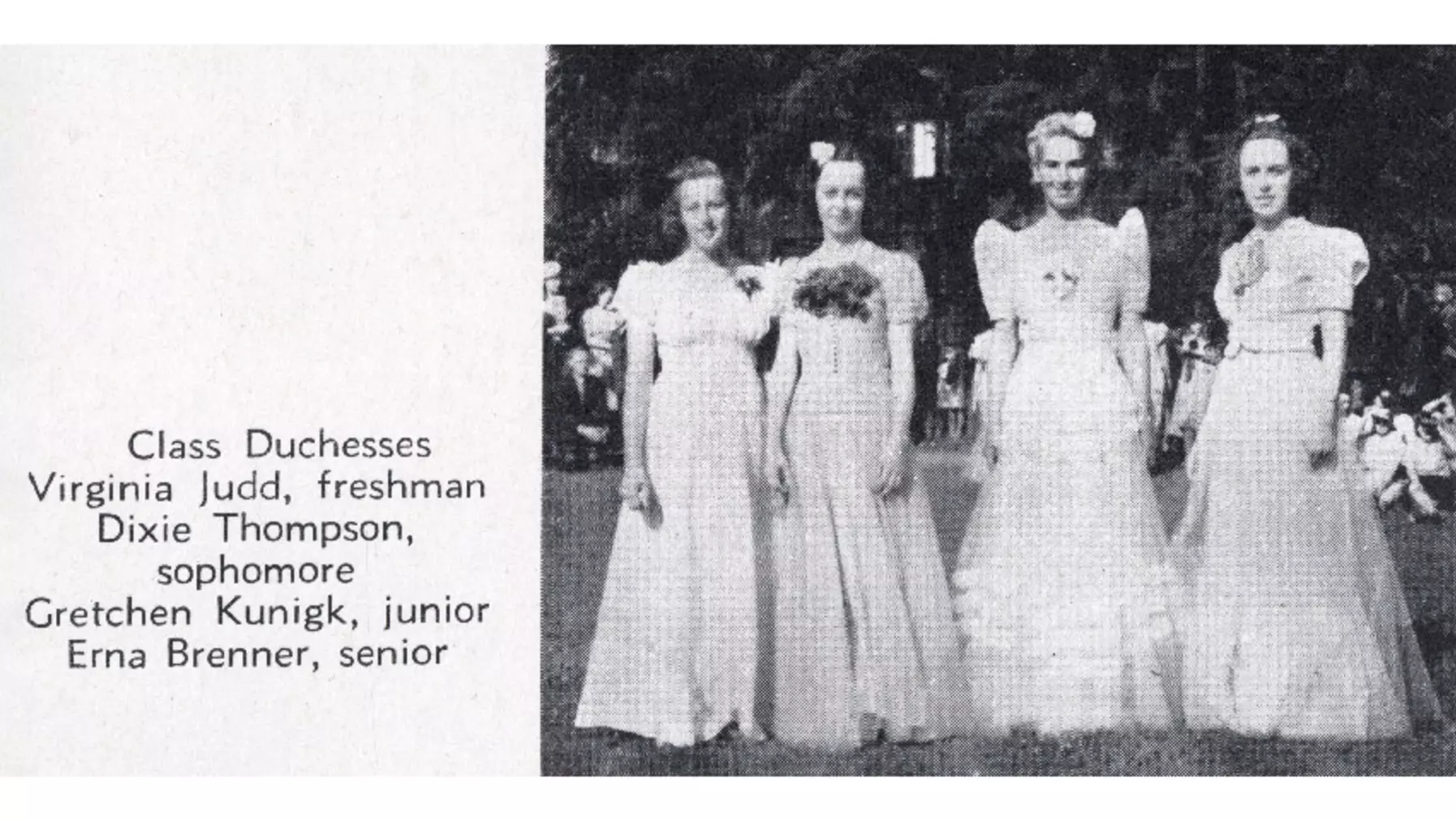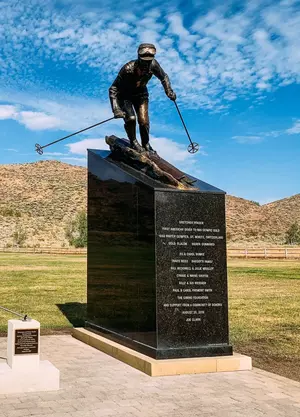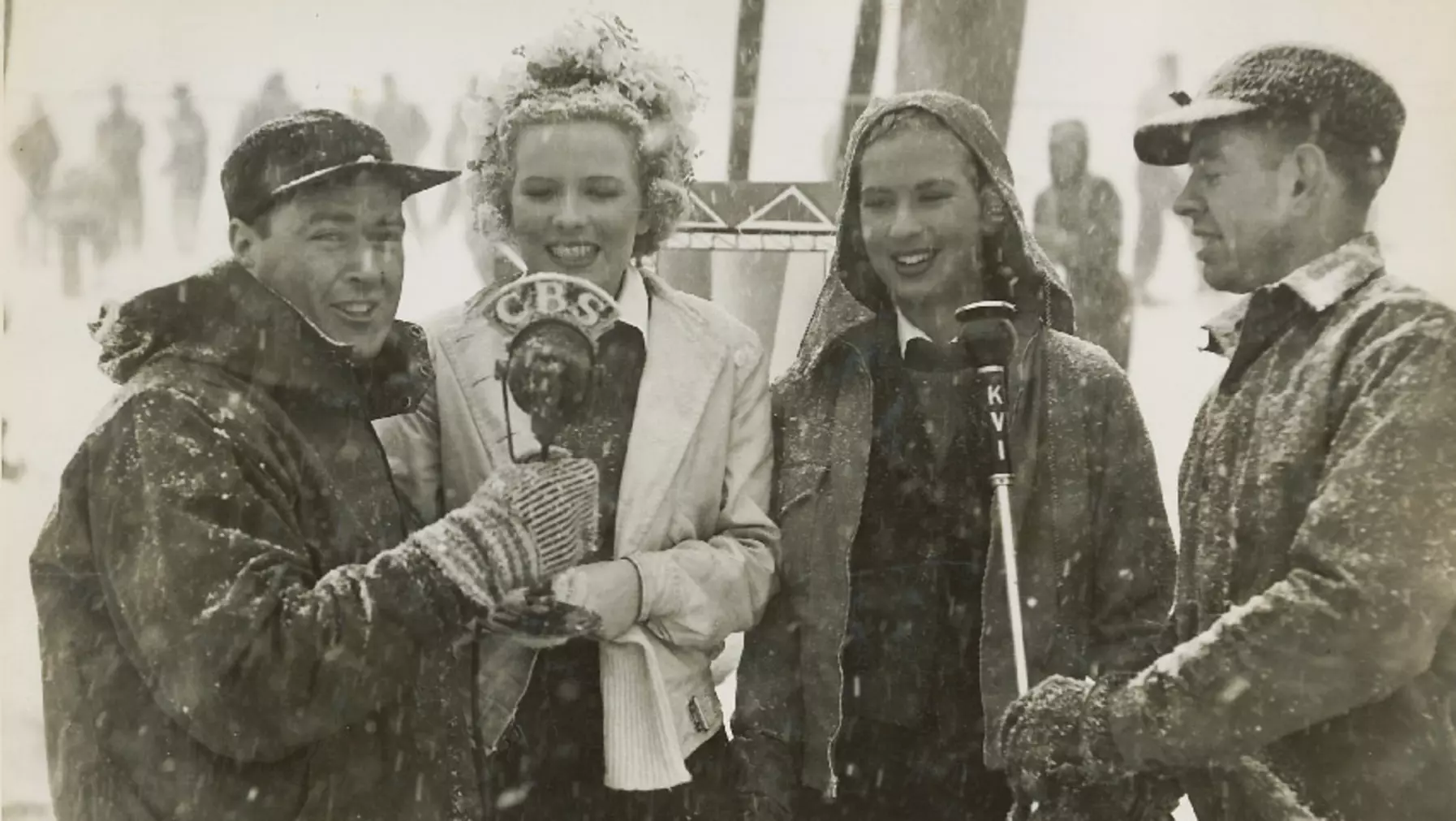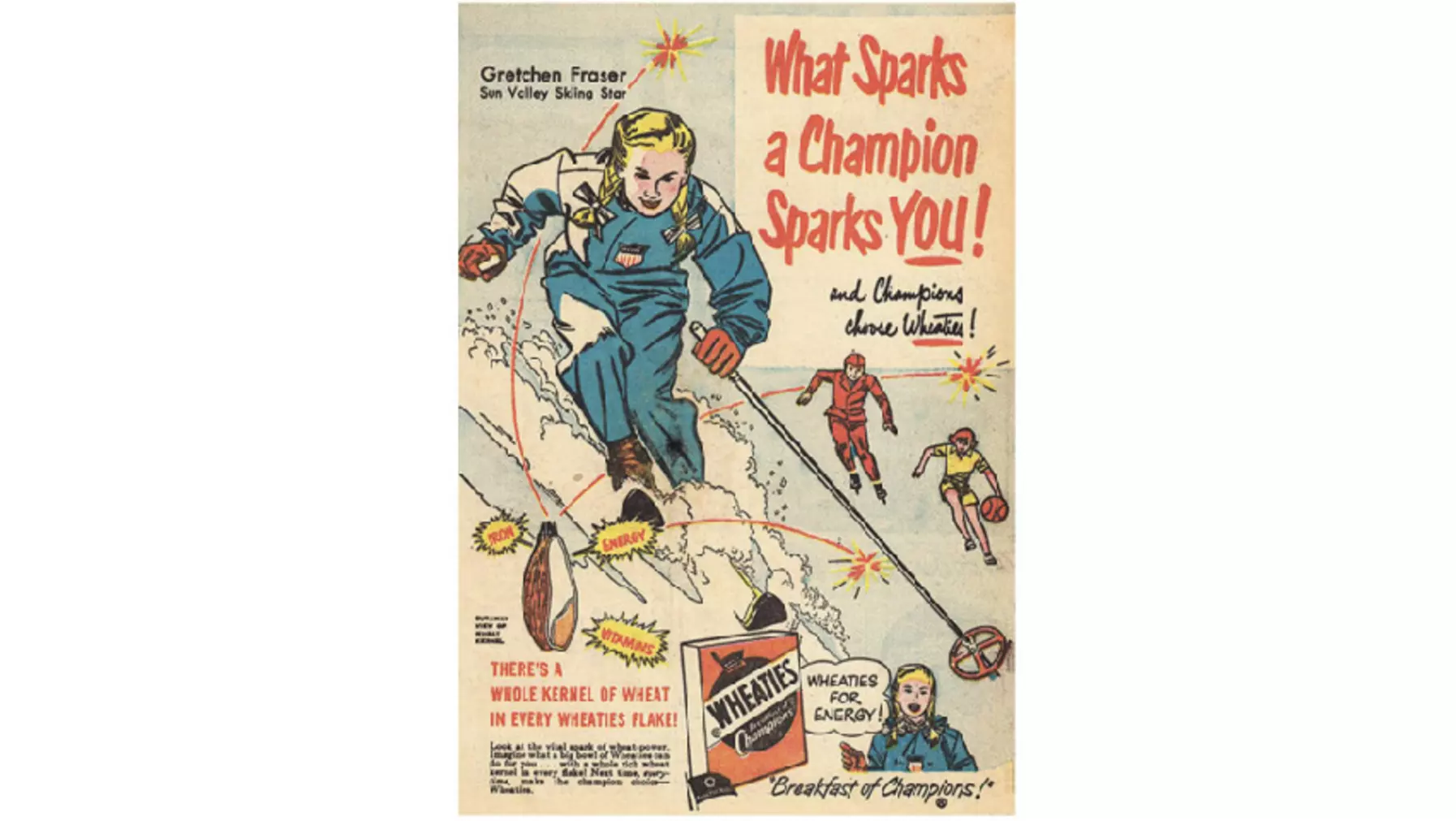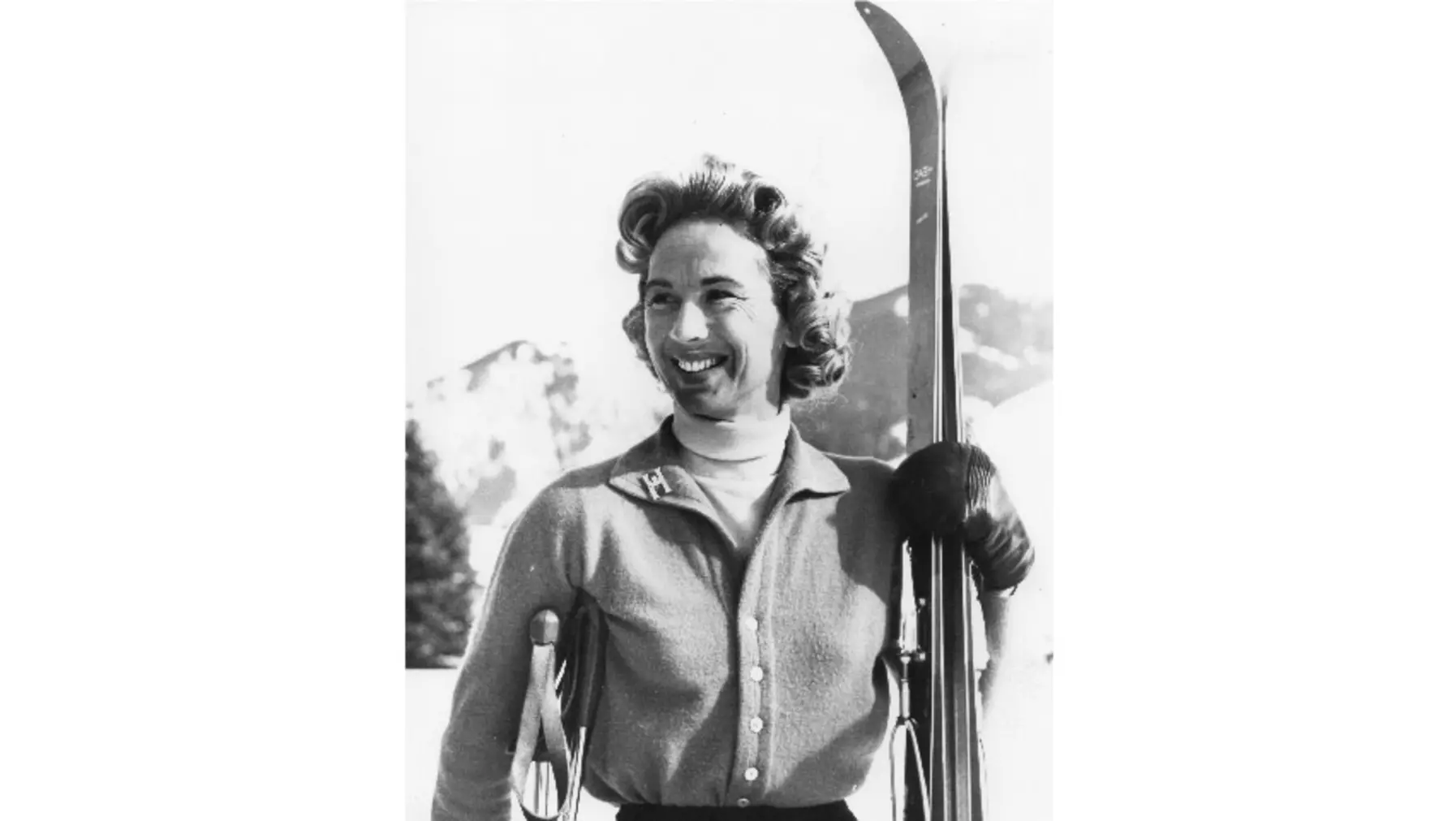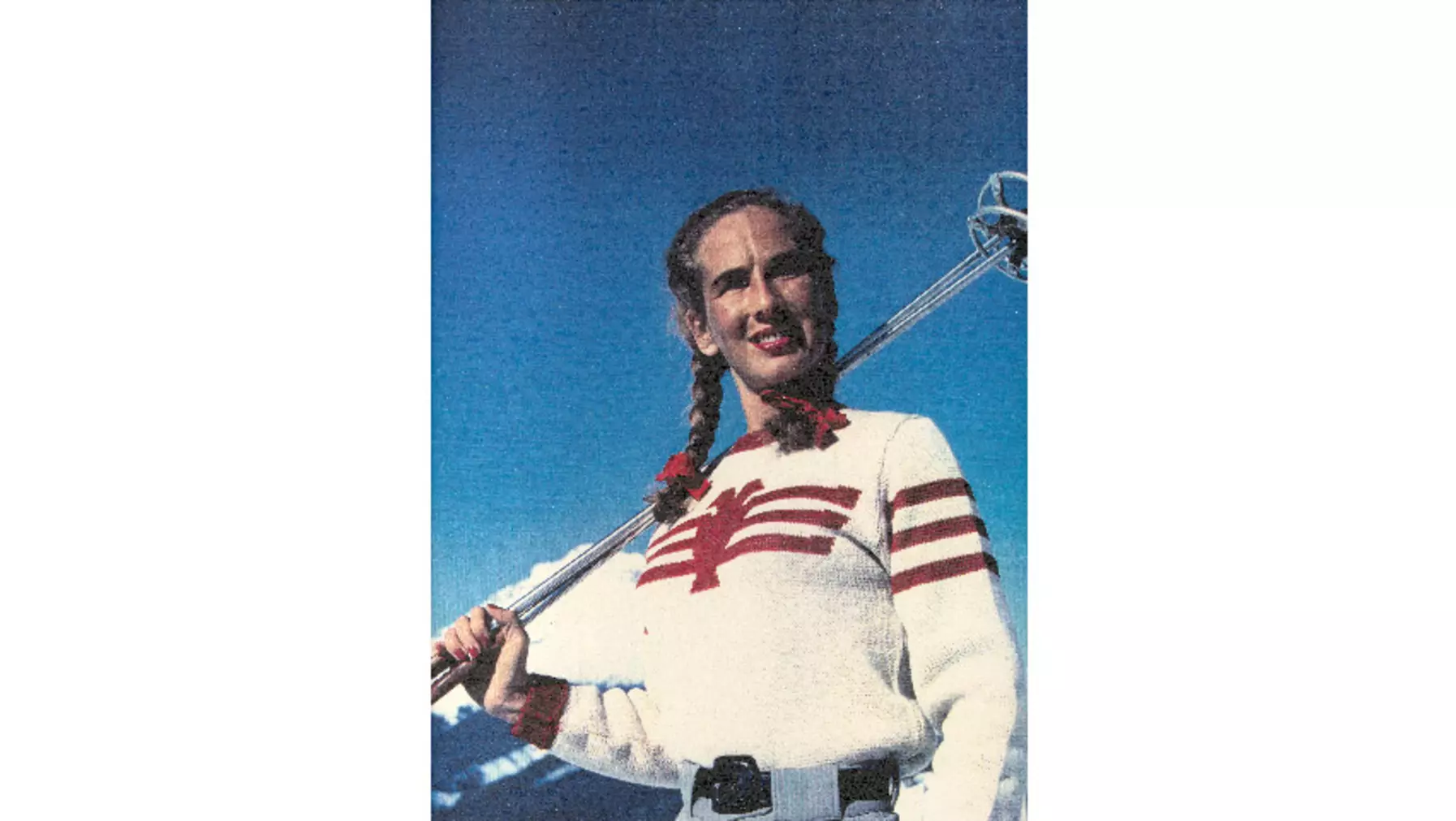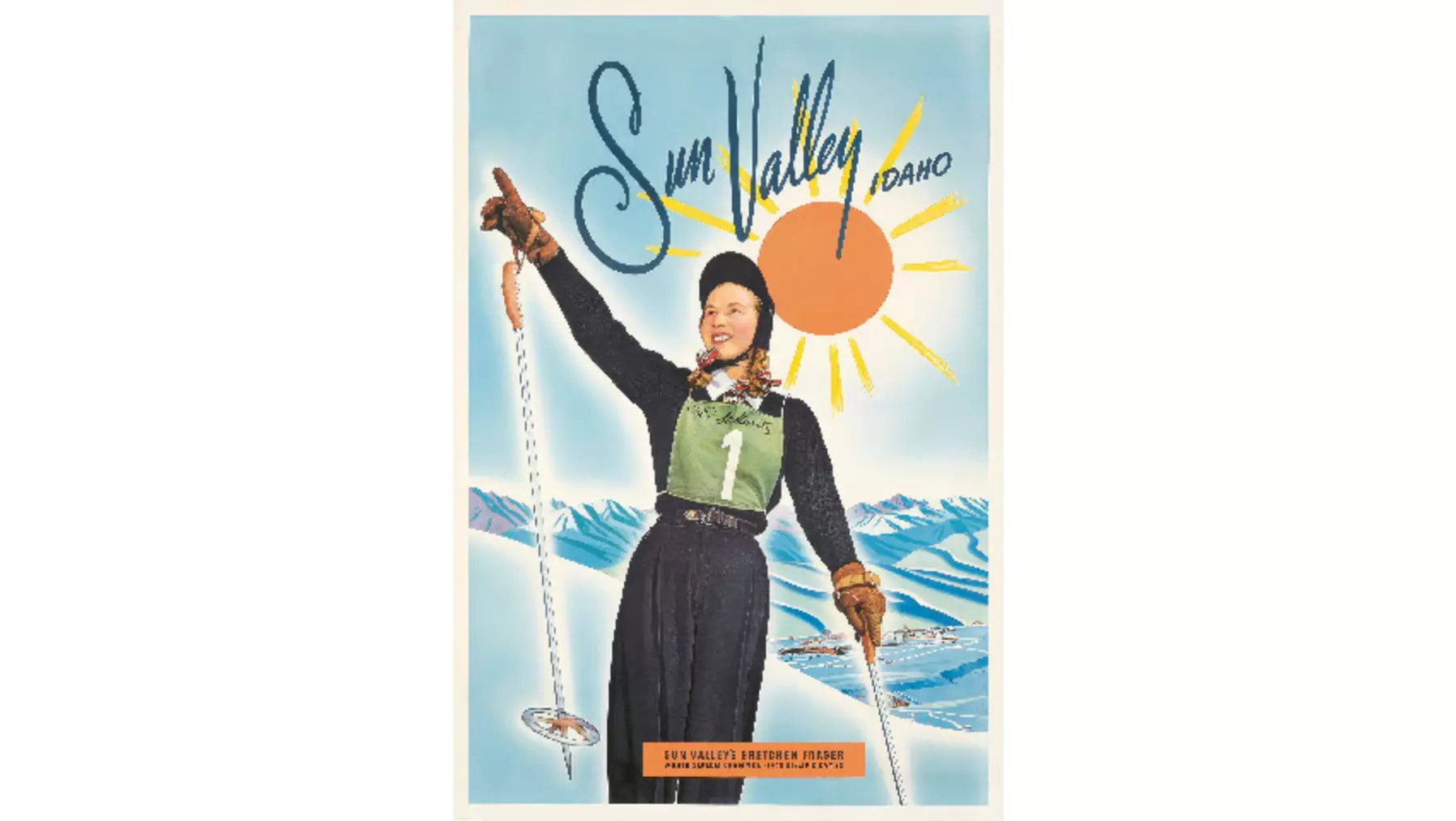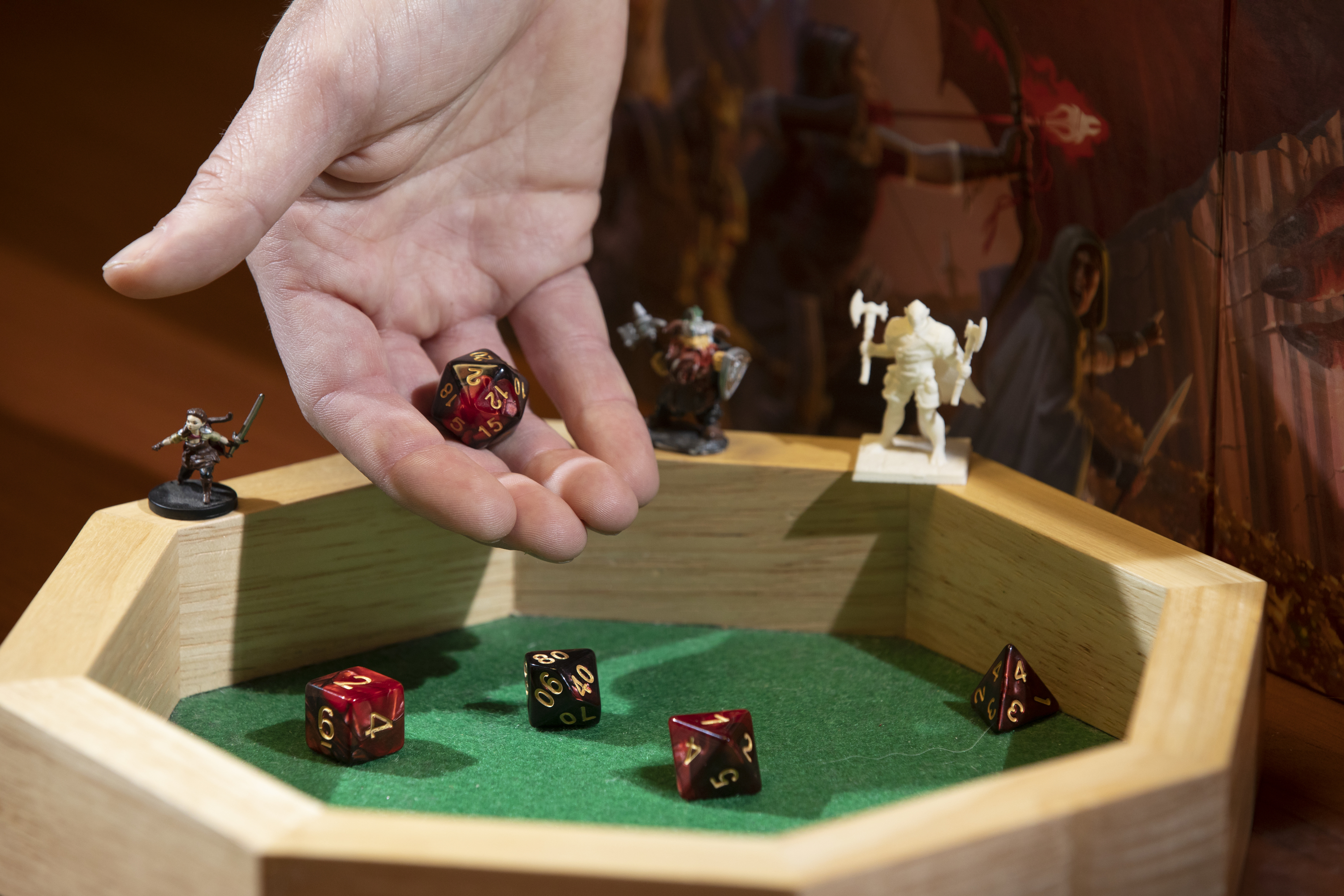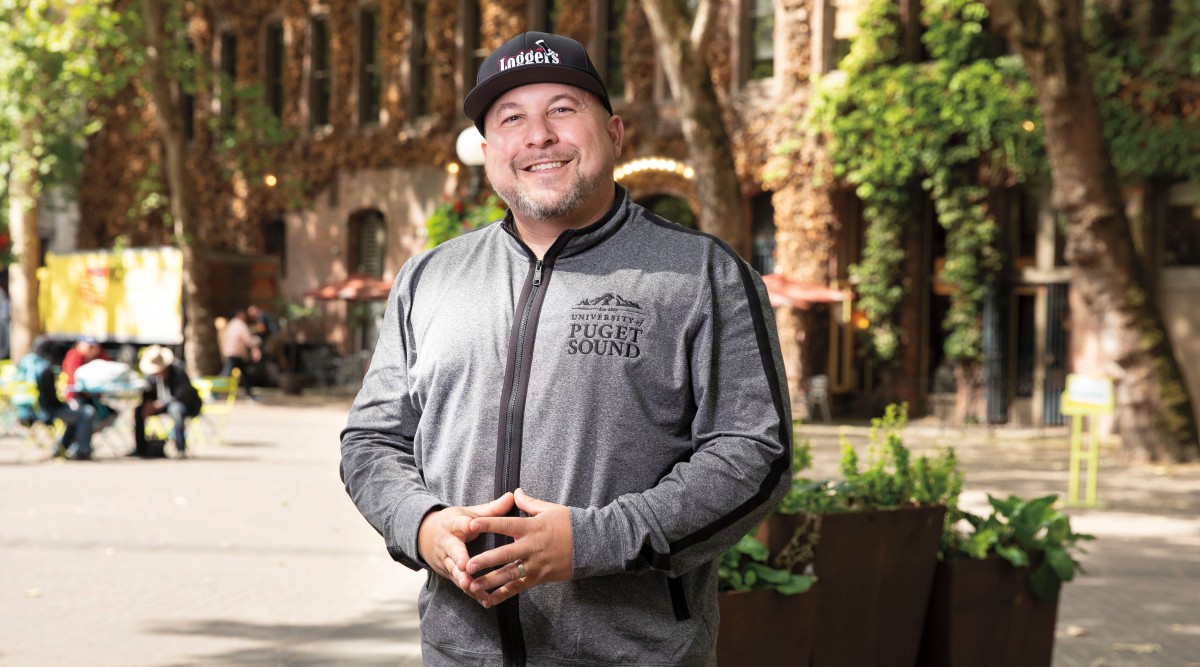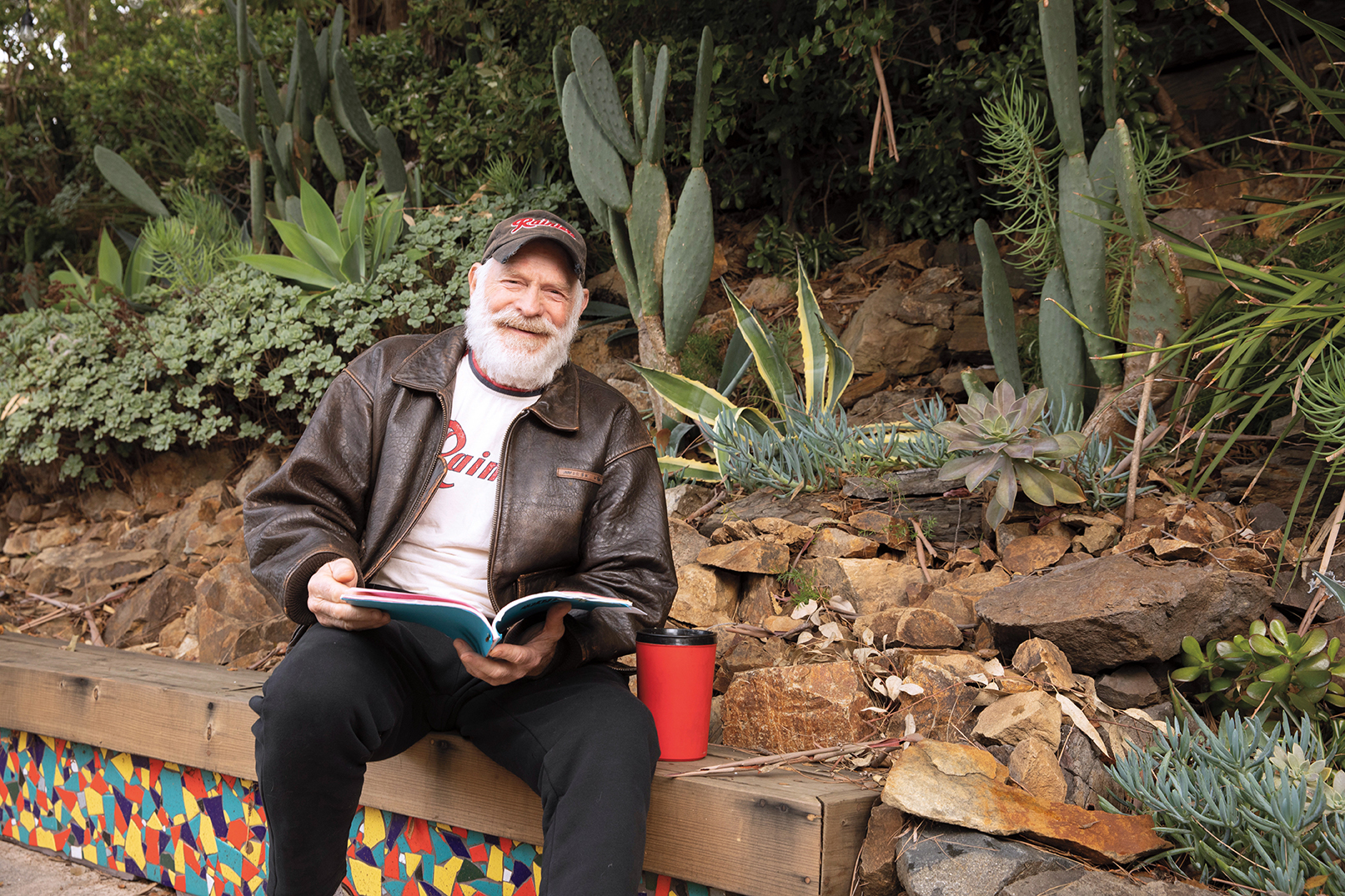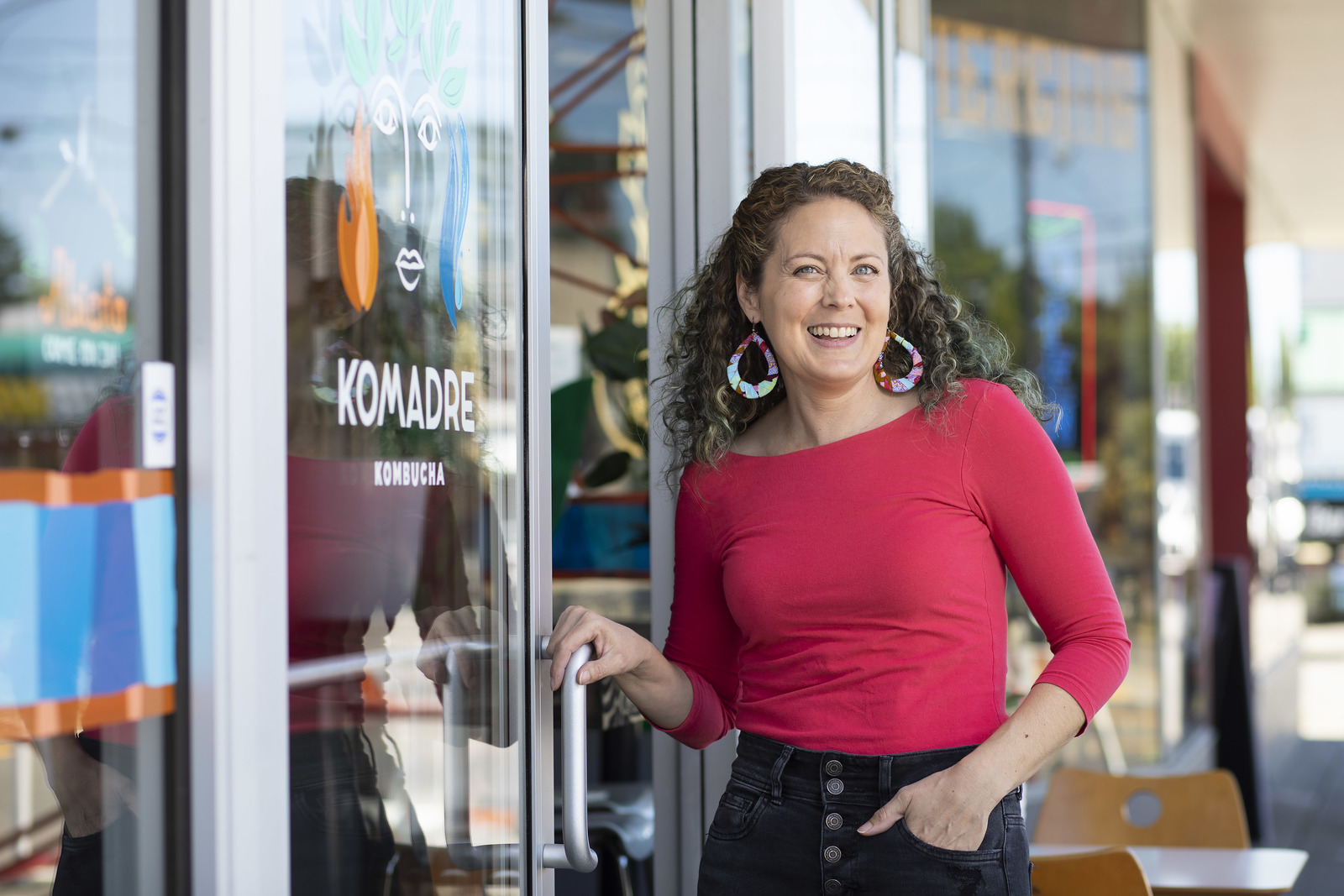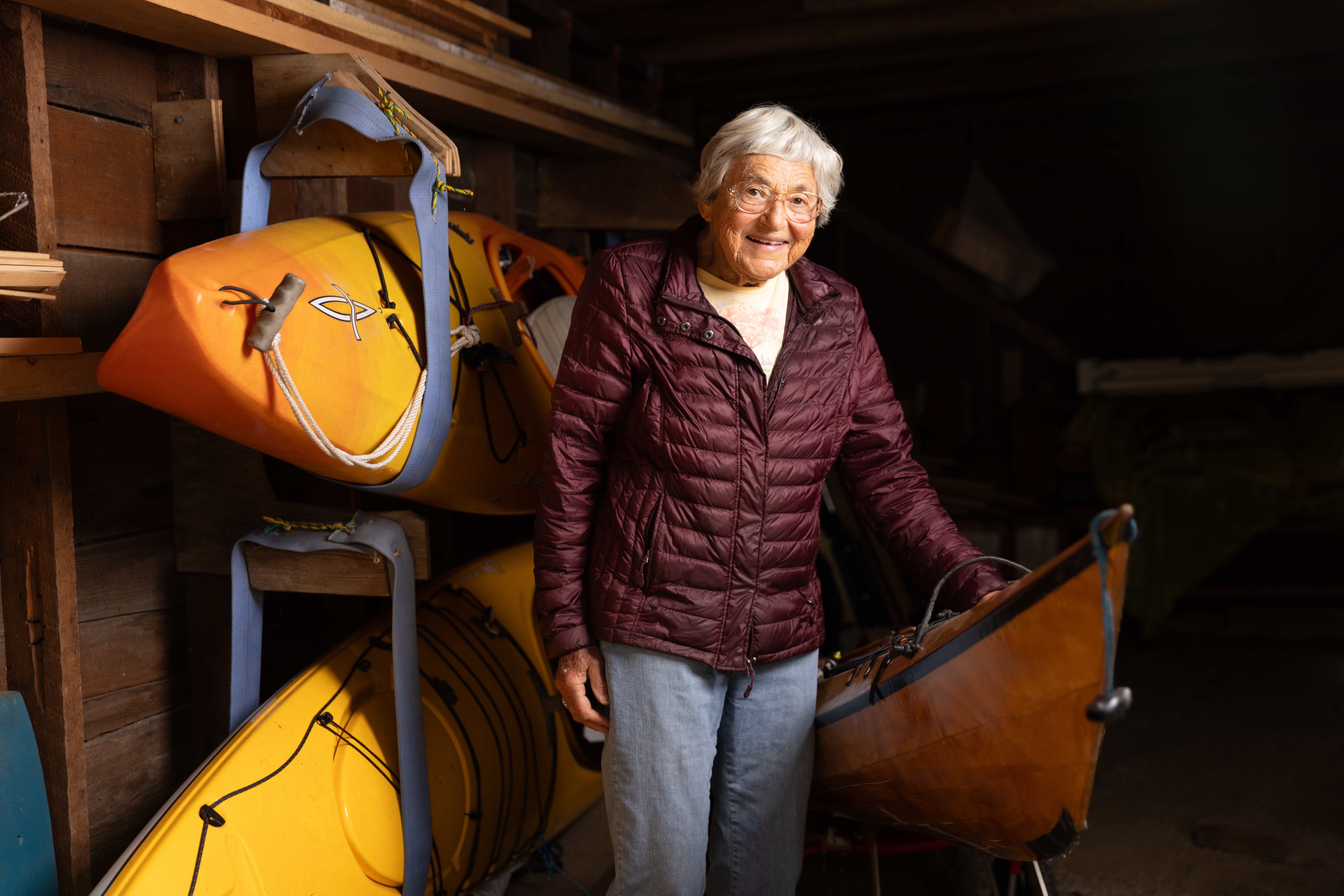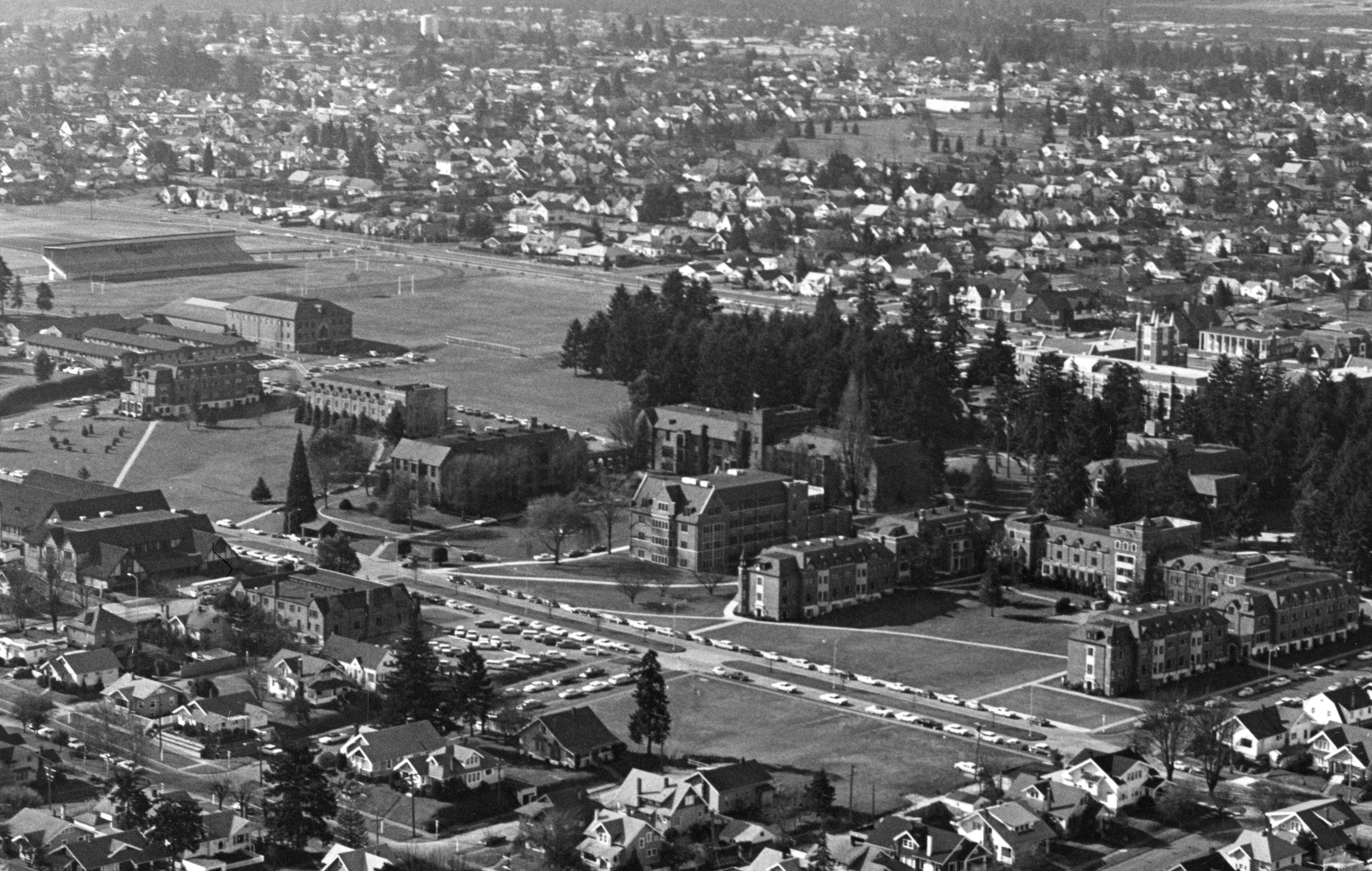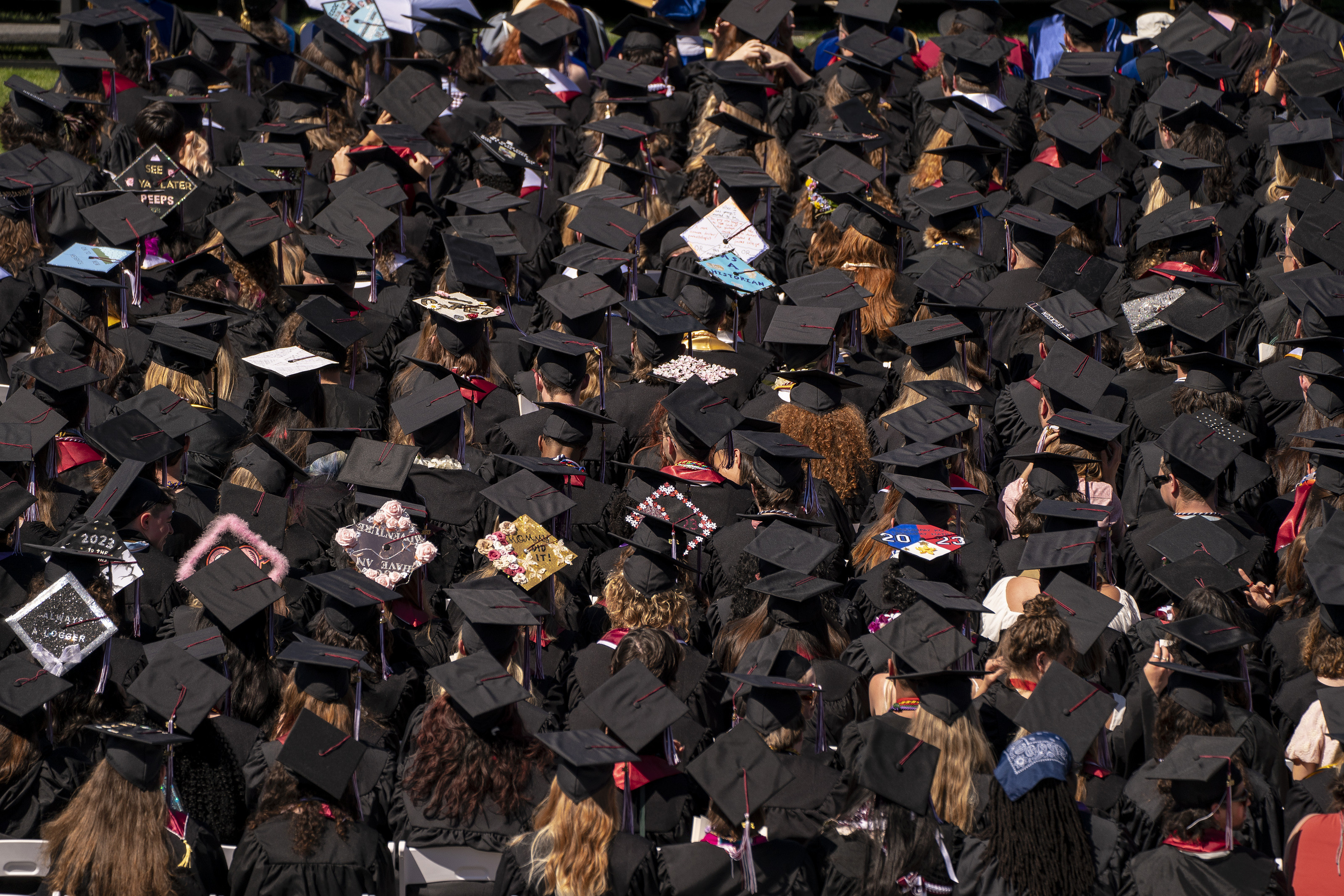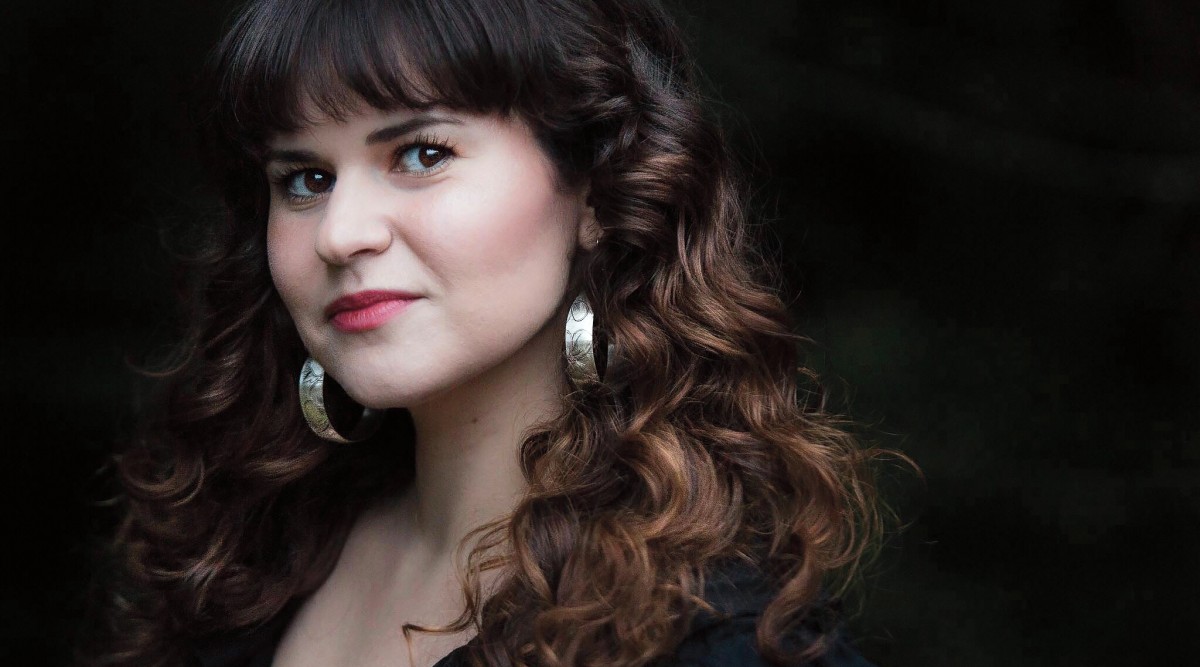She was the first U.S. woman to win an Olympic medal in skiing. Her face was once on a Wheaties box. So why don’t more people know about Gretchen Fraser?
Atop a mountain thousands of miles from home, Gretchen Kunigk Fraser ’41 eased into the starting gate, set into a crouch, and awaited the signal to start the biggest ski race of her life. The odds against Fraser were already tremendously long. The fact that she had even made it to this point—competing in the 1948 Olympic slalom event in St. Moritz, Switzerland, and clinging to a narrow one-tenth of a second lead as she began her second and final run in the competition—felt like something of a miracle. And now, as the brand-new timing system malfunctioned, Fraser learned she would have to wait even longer to begin her race.
The Olympics were not yet televised live in America, so halfway around the world, in Vancouver, Wash., Fraser’s husband, Don, a former Olympic skier himself who couldn’t break away from the family gas and home heating oil business to get to Europe with Gretchen, eagerly waited for news. In Sun Valley, Idaho, a burgeoning ski-resort town frequented by Hollywood celebrities where Don and Gretchen Fraser had come of age as competitive skiers, residents awaited word of the results. In Tacoma, where Fraser had grown up and attended University of Puget Sound, her parents eagerly anticipated a telegram or call from their daughter.
The American media who gathered in St. Moritz had arrived in Switzerland considering Fraser and her fellow members of the U.S. Ski Team an afterthought, the first post-war representatives of a sport that had only just begun to catch on in the country. For female skiers, it was even more difficult: They had no coach until the final weeks before the Olympics, and many people still debated whether skiing was “ladylike” enough for women to participate. As a full slate of alpine skiing events made its Olympic debut in the first winter games since 1936 (1940 and 1944 had been canceled due to World War II), nobody expected much of anything from the United States—and particularly from Fraser, who, at 28 years old, was the oldest member of the team.
